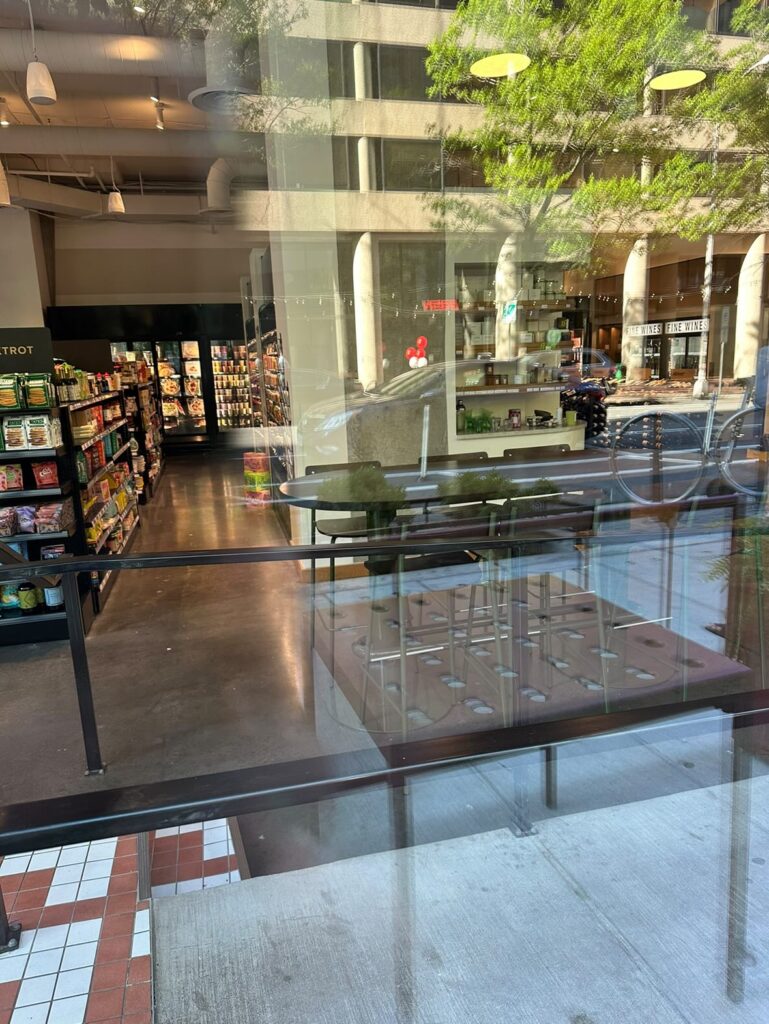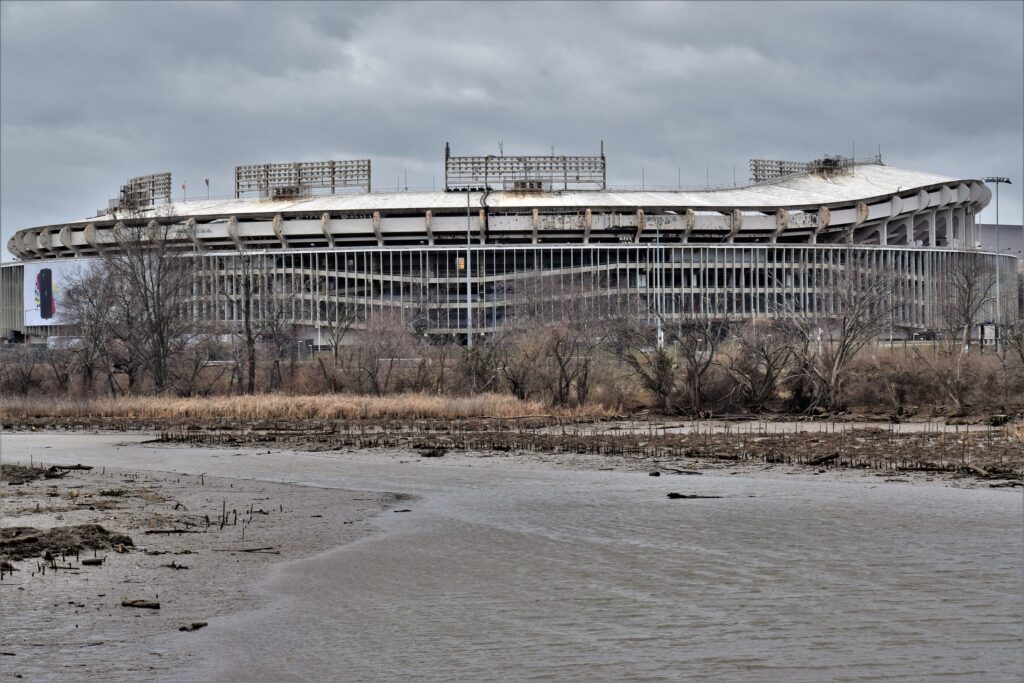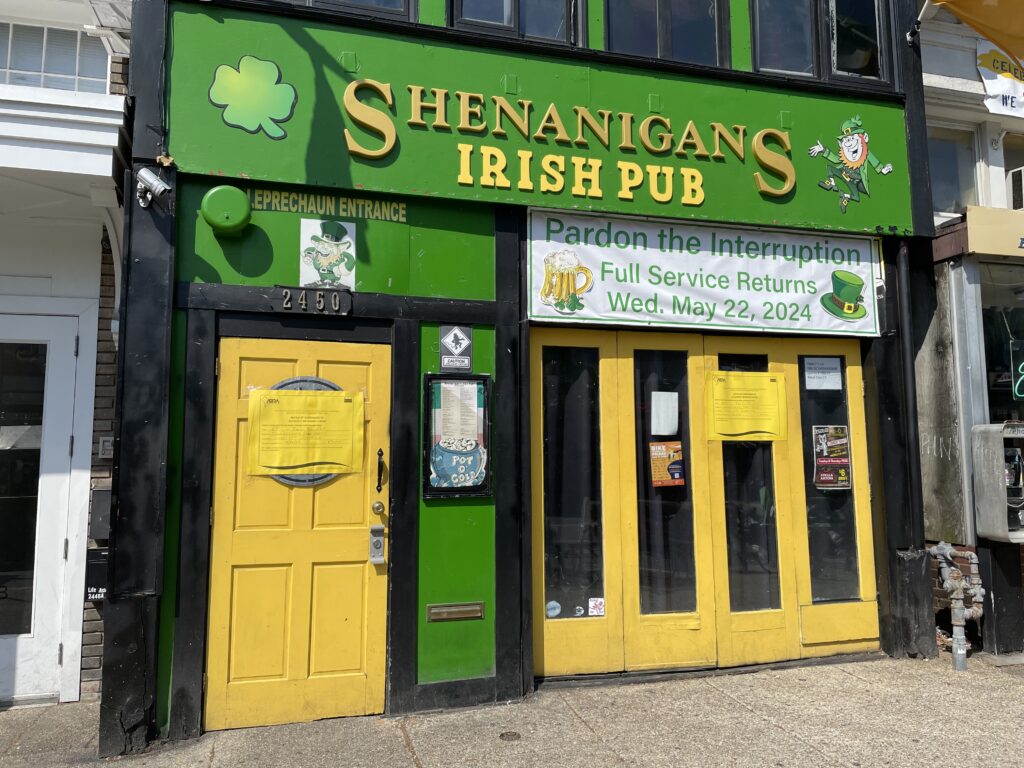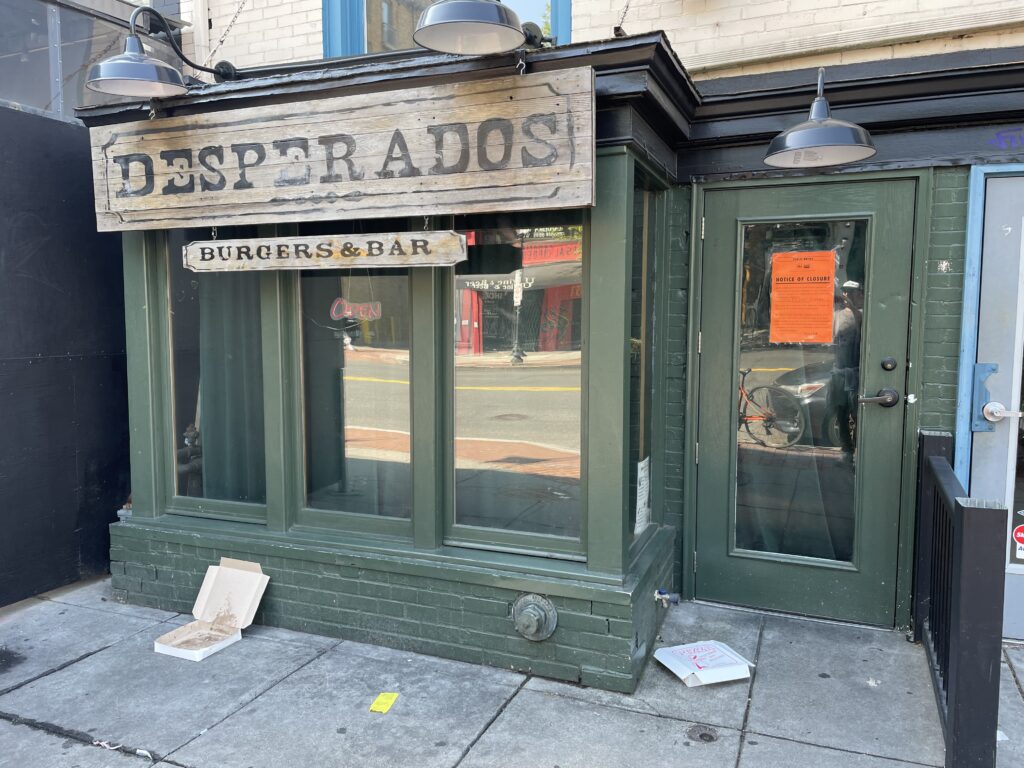Streets of Washington, written by John DeFerrari, covers some of DC’s most interesting buildings and history. John is also the author of Lost Washington DC.
When traveling to Washington in the early 1900s—by train, of course—you would have arrived either at the Baltimore & Ohio Station on Capitol Hill or at the Baltimore & Potomac Station on the western end of the Mall, where the National Gallery of Art now stands. Stumbling out of that station, in desperate need of lodgings, you would have to travel a block north to Pennsylvania Avenue to get to the famous National Hotel across the wide street on the right or the nearly-as-famous Metropolitan Hotel down the block to the left. But if you didn’t want to lug your bags that far, you could choose the St. James, immediately to your right, on the southeast corner of Sixth Street and Pennsylvania.

The St. James was never quite as prominent as its rival neighbors, although it strove for its own brand of distinction and capitalized on its strategic location. It was opened as Bunker’s Avenue Hotel by George W. Bunker (1834-1889) shortly after the Civil War. Bunker, a native of New Hampshire, had been a manager at the National Hotel for six years and had also worked at the Seaton House hotel, a block to the west. John Wilkes Booth stayed at the National in April 1865, and during the court inquiry into the assassination of President Lincoln, Bunker testified about Booth’s comings and goings, which he had observed.
Continues after the jump.

Bunker took over buildings that in the 1840s had housed the hotel and restaurant of Joseph Boulanger (1791-1862). Boulanger, a native of Belgium, had come to Washington to be the White House chef under Andrew Jackson and Martin Van Buren before striking out on his own. Like many early Washington hotels, his establishment was cobbled together from several of the federal townhouses that lined Pennsylvania Avenue in those days. Bunker remodeled and expanded the hotel in 1868 and renamed it the St. James. The new establishment could accomodate 250 guests and had a large first-floor dining room in the expanded part. “The house is repaired, repainted, and refurnished throughout. Brussels carpet and black walnut furniture, entirely new, has been introduced into the various rooms,” Bunker advertised.
Bunker sold the hotel in 1871, only a few years before the B&P railroad station was constructed virtually next door, guaranteeing a steady clientele. In that same year, Joseph Hartz (1836-1903), a celebrated illusionist, stayed at the St. James and entertained its guests with his feats of magic, such as the Inexhaustible Handkerchief and the Disappearing Cabinet.

A delivery car parked on the 6th Street side of the St James, circa 1925 (Source: Library of Congress).
In July 1887, the Washington Critic-Record wrote a flattering review of the hotel on the occasion of its recent renovation and expansion, calling it “one of the largest and best-appointed hotels in Washington.” The café and bar were noted for their ornamental tile floors and English Oak wainscoting, the dining room its leather-upholstered high-back oak chairs. The kitchen was equipped with the latest “Bramhall & Dean’s ranges and steaming apparatus.” Special “sample rooms” for traveling salesmen were made available in the rear, a ladies’ waiting room was positioned conveniently by the elevator, and “bath and toilet rooms are to be found on each floor.” Wires and fixtures for electric lights had even been installed, “to be used as soon as the Electric Light Company completes arrangements for supplying the light.” We have no record of how long that took.
The renovations were undertaken by Levi Woodbury (1844-1925), a successful and popular Washington businessman who had a house on Logan Circle and eventually became president of the Norfolk & Washington Steamboat Company. Woodbury and co-owner Hylas T. Wheeler ushered in the golden age of the St. James, when it offered comfortable accommodations to travelers as well as a convenient meeting spot for power brokers such as House Speaker “Uncle Joe” Cannon (1836-1926).

Still, the St. James remained an unpretentious place. In an 1898 advertisement, the hotel called itself the “best family hotel at the National Capital. We make you feel at home on arrival. Single rooms $1.00 per day and upwards; suites, with bath, $3.00 to $6.00.” Rooms were available on the “European” plan, which meant that your room charge did not include meals.

From the collection of David White
Like almost all the buildings south of Pennsylvania Avenue, the St. James was doomed after the McMillan Commission recommended that entire area be cleared for the creation of a more monumental core for the capital city. The hotel closed in 1927, and all its furnishings were auctioned off, including antique furniture, “lamps of every description,” and the unusual glass-enclosed mounted game pictures that had graced the dining room’s walls. The beautiful mural of Dunraven Castle in the lobby couldn’t be removed, however, and so had to be “sacrificed.” The following year a proposal was floated for the DC police department to take over the building to house its women’s bureau and a house of detention, but key officials opposed the plan.
The federal government finally purchased the site later in 1928 as it moved to create a grand boulevard—Constitution Avenue—out of the old B Street N.W. B Street, narrower than Constitution Avenue is now, did not intersect with Pennsylvania Avenue but existed in two separate fragments, one heading west from Sixth Street and the other heading east from Third Street, with Pennsylvania Avenue cutting through the space between. The St. James stood where B Street needed to be extended at Sixth so that it could intersect with Pennsylvania Avenue and connect up with its eastern half.

Site of the St. James Hotel as it appears today. Pennsylvania Avenue is in front; Constitution Avenue is behind the tree-filled triangle park. (Photo by the author.)
The northeast corner of the site today is a small triangular park between Pennsylvania Avenue and Constitution Avenue. The rest of the site is paved over as part of Constitution Avenue itself.
Recent Stories
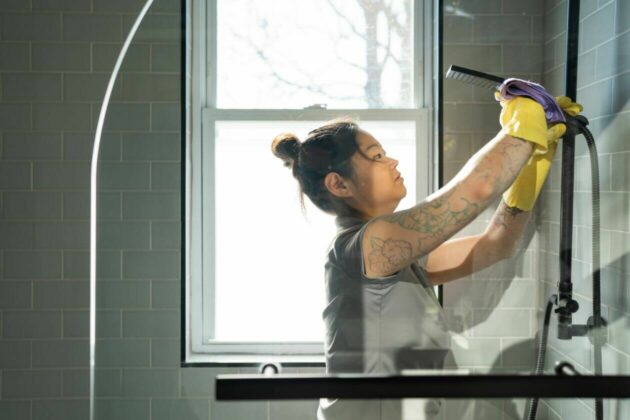
Good news, D.C. area. You can save money on your next home cleaning with Well-Paid Maids. It’s easy!
We offer a discount when you set up recurring cleans — and the discounts just increased this week!
For weekly cleans, get $30 off each cleaning.
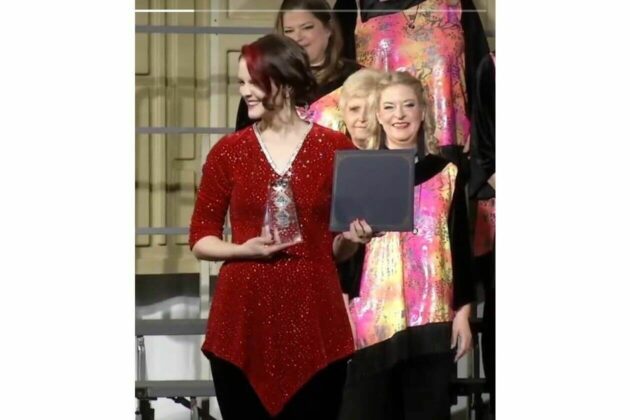
Potomac Harmony is Back! Following a gap year of competing, then virtual rehearsals during the pandemic, followed by the well-earned retirement of our long-term director, a year of a director search, Potomac Harmony hit the regional contest stage in Concord, North Carolina in March for the first time since 2018! It was exhilarating, reaffirming, and rewarding!
The chorus hit all of its goals, the biggest of which was to have fun and sing our best on contest stage — we did both! Because we earned a score over 400 points, our new Director, Allison Lynskey, was awarded the Novice Director award, photo above. Additionally, one of our charter members, Jackie Bottash, was nominated for and honored with the Leadership Excellence award. It was a celebratory weekend!
What’s next? So much! We now look forward to upcoming performances, growing our membership, and expanding our musical product with new arrangements and an education component each week. It’s an exciting time to be part of this ever-growing ensemble!
St Mary Armenian Church Annual Spring Food Festival
Come hungry and leave happy! Experience culture, community, and cuisine all in one place. See you at the festival!!!!
Comedy Cabaret
Kick up your heels at Bad Medicine’s COMEDY CABARET extravaganza at the DC Improv Comedy Club on Tuesday, May 21st. Revel in the sights and sounds of this entertaining musical revue, with songs, dance and sketch comedy that will have


